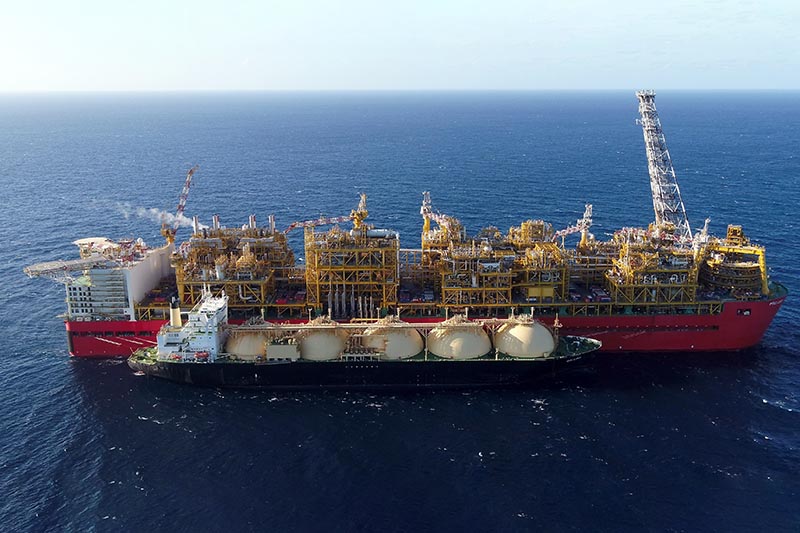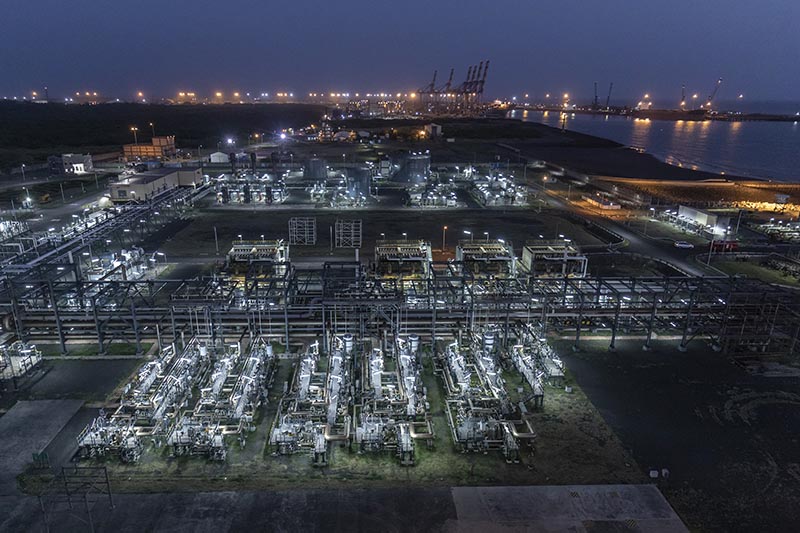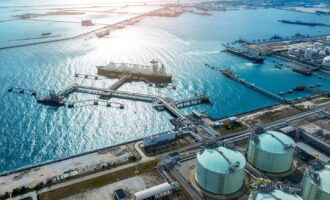
Europe LNG demand reshapes global trade flows
A collapse in pipeline gas from Russia, following Russia’s invasion of Ukraine, impelled Europe to prioritise liquefied natural gas (LNG) imports. Just before dawn on February 24, 2022, scores of Russian missiles struck cities all over Ukraine. Russia’s illegal invasion of its neighbour has sparked a humanitarian, social and economic crisis for the Ukrainian people. It has also caused profound and potentially permanent changes to energy markets. Governments across the globe introduced heavy sanctions on Russia’s oil and gas industry—which experts say is fueling Russian Prime Minister Vladimir Putin’s war efforts—causing extreme volatility in the energy sector.
According to the latest Shell LNG Outlook, which was published on February 16, 2023, LNG is becoming an increasingly important pillar of European energy security. Europe’s thirst for LNG has led to record gas and LNG prices in 2022 and is likely to result in structural changes to the gas market in the European Union.
The attack on Ukraine forced governments across Europe to take “unprecedented policy and regulatory intervention” to mitigate high prices and ensure energy security. Government actions are focused on ramping up LNG supply along with gas demand destruction to offset its Russian gas reliance.

Shell’s LNG Outlook detailed several policy decisions designed to bolster energy security including the rapid development of new gasification terminals in north-west Europe and mandates on gas storage of 90% by November 2023. A market correction mechanism and a novel joint gas purchasing approach were advanced in a bid to leverage the bloc’s purchasing power and 20 billion cubic metres per year of new transmission was planned in 2022. In addition, an assortment of country-specific mechanisms were introduced to prioritise LNG and shield residents from severe energy prices.
Europe imported 121 million tonnes (MT) of LNG in 2022, an increase of 60% year-on-year, and was the leading global importer by some margin. However, the Russian conflict is not only impacting European supplies. Europe’s muscle flex on LNG imports forced significant changes for buyers in other markets. The outlook detailed a reversal in global trade flows that could impact the long-term trajectory of the LNG industry.
LNG growth in Europe corresponded with a fall in Asia—which helped Europe navigate a precarious energy supply situation. The outlook specified a 19% drop in China’s LNG imports (a decline of 15 MT) which was attributed to lower demand amid strict covid measures and slower than forecast economic growth. In South Asia, LNG imports fell by 5.8 million tonnes as higher prices encouraged fuel switching and lowered gas-fired generation. Pakistan and Bangladesh increased fuel oil imports to mitigate power supply shortages and an increase in coal use was evident in India. South American LNG imports also fell, by 7 MT.
Global LNG supply reached 397 MT in 2022 with 16 MT of new supply. Intensifying competition for LNG is expected moving forward with China recently ditching its strict zero-covid policy and sustained demand anticipated in Europe. Shell’s analysis foresees annual LNG capacity reaching 650-700 MT by 2040. However, there will be limited new supply in the next two years. The outlook signalled China’s changing role—from growth to one of providing flexibility to balance the global LNG market.
Fuel switching has allowed several countries to navigate the LNG supply crunch and reduce some of the pain for individual households and businesses. However, fuel switching comes with environmental drawbacks. A coal rebound in major Asian economies is set to have a lasting impact on emissions. The outlook noted an increase in India’s emissions in 2022 by 5.5% compared to 2021, whereas China’s emissions rose by 1.9%. Emissions in the rest of the world (excluding China and India) rose by 2.2% in the same period.
Germany also fired up its coal plants to address an impending energy gap following the reduction in Russian imports. Shell’s evaluation drew attention to the impact on air quality in some German regions, such as the Rhineland, and noted a significant jump in electricity carbon dioxide (CO2) emissions in Germany.
Australia, Qatar and the United States are the top three LNG exporting countries. The U.S. led global supply growth in 2022 with an additional 5.9 million tonnes of liquefaction helping balance global LNG supply. Shell expects the bulk of new LNG supply to 2030 (80%) to come from the U.S. and Qatar, although, the authors noted a heightened risk associated with U.S. supply as over 95% of capacity is concentrated in two states.

Ongoing volatility in LNG markets is likely. Shell expects the market to remain tight until the mid-2020s and it will continue to be exposed to supply and demand shocks. The outlook emphasised a need for further investment to meet forecast LNG demand while noting the role conflicting energy scenarios play in deterring investors. A supply-demand gap may emerge in the late 2020s without the appropriate level of investment.
Global gas and LNG prices will continue to be unstable. Shell emphasised the importance of entering into long-term contracts to secure reliable supply and to minimise exposure to price spikes.
The LNG Outlook also outlined the impact of high gas prices on industrial manufacturers in Europe. There has been a 16% decline in average gas use by industrial users in major European markets compared to 2021. However, LNG continues to be adopted in transportation markets with the research noting the presence of 355 LNG-fuelled vessels—an increase of 41%, with another 521 vessels on order (+30%). LNG plays an increasing role in heavy-duty road transportation in Europe with 39,600 LNG and bio-LNG vehicles and 635 LNG fuelling stations.
Not all energy can be electrified. The outlook emphasised the enduring role of gas in the lower emissions transition and highlighted its application in hard-to-electrify sectors such as industry, transport and heating. For future energy security, gas needs to be decarbonised.
Shell outlined progress on developing lower emissions LNG technologies including a 28% increase in LNG plant projects with carbon capture utilisation and storage (CCUS) in 2022. Six plants have announced plans with a total LNG capacity of 67.5 MTPA.







